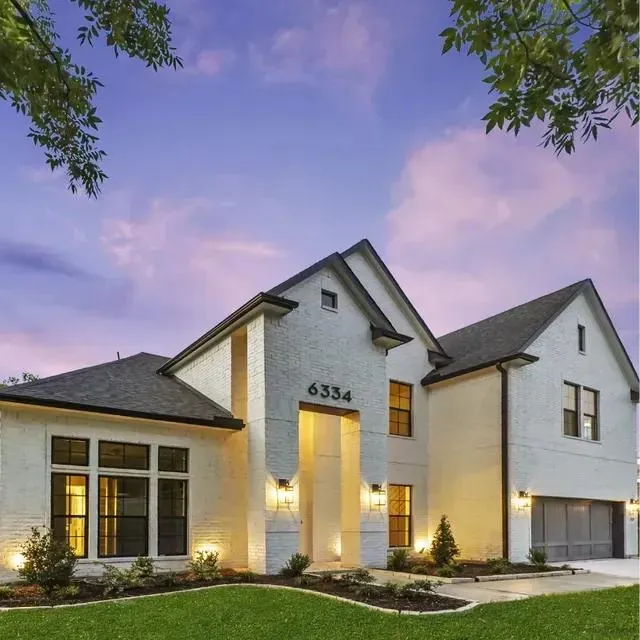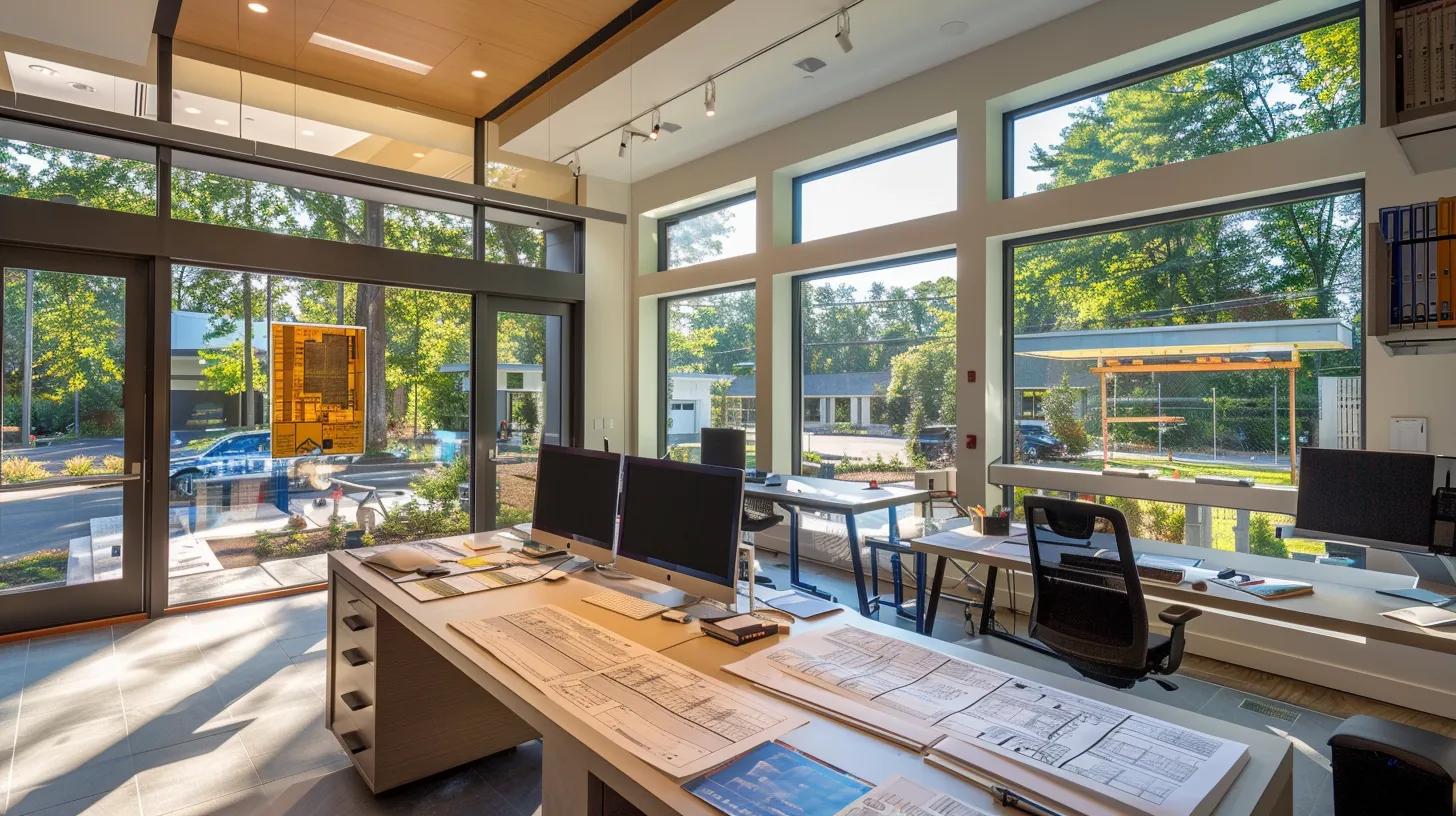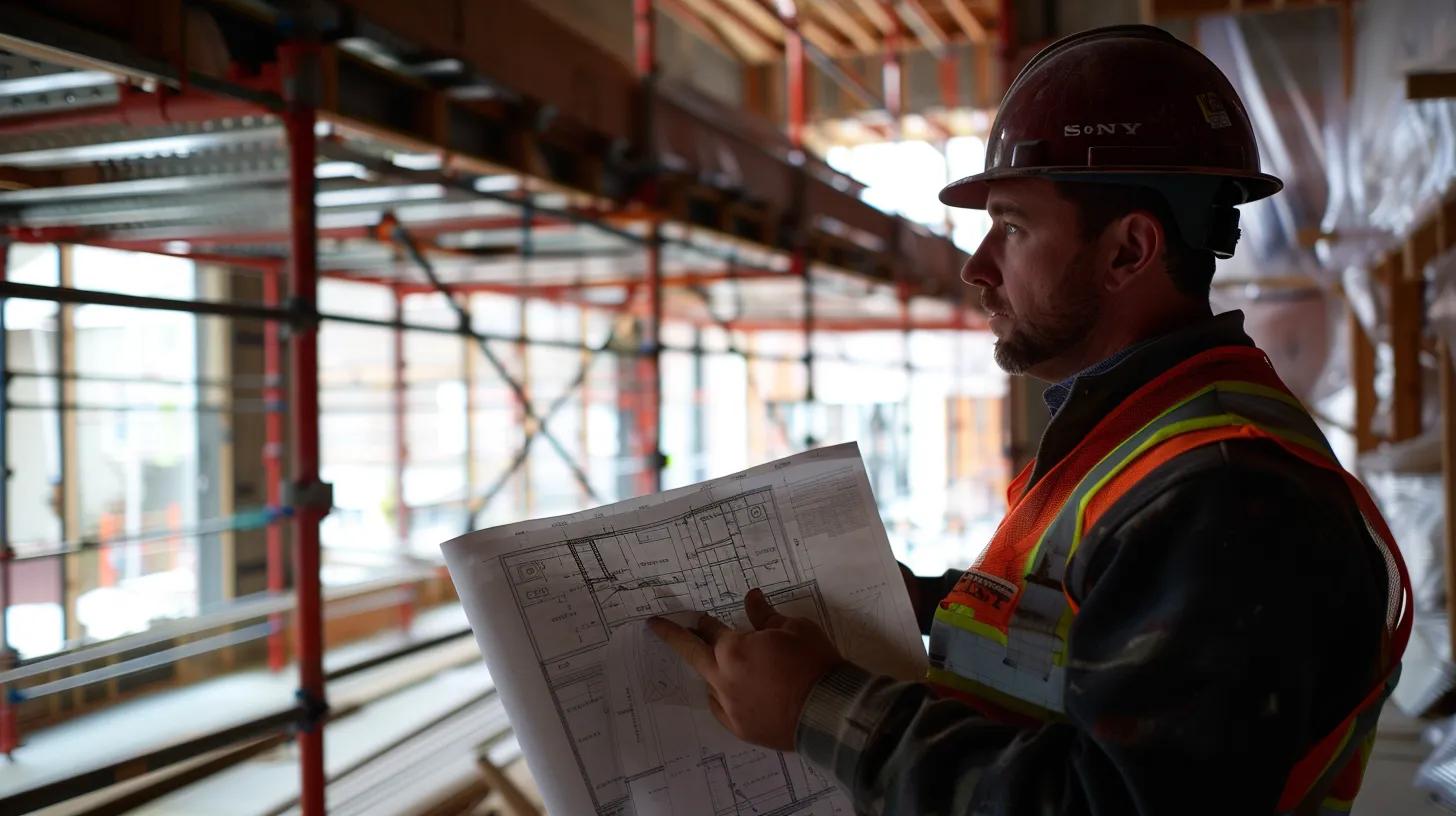Resources
Get Matched to the Right Builder
FIND THE PERFECT CUSTOM HOME BUILDER WITH OUR FREE ASSESSMENT
Tired of feeling overwhelmed? Look no further. We'll match you to the right builder in the Houston area and save you months of valuable time and money you'd spend trying to find one on your own. Click below to get started!

Download The Ultimate Custom Home Building Guide
A Step-by-step guide to building your custom dream home.
Download The Ultimate Custom Home Building Checklist
Finance

Finding Lot

Best Builder

Explore Our Gallery of Custom Homes
Browse our finished projects that display the craftsmanship of the builders we’ve matched with homeowners – turning dreams into reality.









BLOG

Mastering Project Management for Flawless Home Construction
In today’s complex construction environment, managing a custom home build requires more than just an eye for design; it demands robust project management strategies to coordinate teams, timelines, and budgets effectively. Home construction projects are inherently multifaceted—they involve scope definition, budgeting, regulatory compliance, and risk management while utilizing project management software to ensure efficiency. Understanding these processes not only prevents cost overruns but also provides a roadmap for resolving issues before they escalate. The following sections outline how to map out every phase of your construction project, ensuring quality standards are met while mitigating risks through a structured, analytical approach.
Key Takeaways
Thorough planning at the foundation stage ensures alignment with objectives, timelines, and regulatory requirements, setting the stage for a smooth build.
Strong leadership and clear team roles are essential for fostering accountability, coordination, and efficient execution of every phase.
Strategic scheduling with milestone tracking keeps the project on course, allowing for early detection and adjustment of delays or resource gaps.
Robust cost management practices support financial transparency and decision-making, such as budget tracking, organized procurement, and controlled change orders.
Quality assurance protocols, including inspections, risk monitoring, and contingency planning, help deliver durable, code-compliant results with fewer setbacks.
Streamlined communication and documentation systems promote clarity, prevent delays, and ensure that every stakeholder stays aligned from start to finish.
Establishing a Solid Foundation for Your Home Construction Project

Establishing a solid foundation for a home construction project is essential to ensure long-term success and adherence to project timelines. At the onset, a comprehensive understanding of your project scope and objectives lays the groundwork for effective management. Defining what you want to achieve—from the overall design to specific features and quality standards—helps avoid scope creep and sets realistic expectations with stakeholders. Integrating project management tools, such as Gantt charts and construction management software, enables the tracking of progress and efficient resource allocation, which is critical in a dynamic construction environment.
Defining Scope and Objectives for Construction Success
Clearly identifying project objectives, including size, design elements, and functionality, keeps your build on track. A detailed scope ensures that no critical component is overlooked, guiding decisions throughout the project. Outlining measurable goals provides a benchmark for evaluating performance and detecting deviations early on.
Creating a Realistic Budget and Financial Strategy
A comprehensive budget should reflect all direct and indirect costs such as materials, permits, labor, and contingencies. Accurate cost planning enables project managers to allocate funds efficiently and make timely adjustments. Financial planning software supports expense tracking and improves transparency across stakeholders.
Ensuring Compliance and Site Preparation Readiness
Researching and obtaining local permits and understanding building regulations is crucial. Early communication with local authorities avoids regulatory setbacks. Proper site assessment, including soil testing and hazard evaluations, ensures safe construction and long-term durability.
Building and Leading Your Home Construction Project Team

Effective leadership and team building are critical for a successful home construction project. The construction industry relies on collaboration among various stakeholders, including general contractors, subcontractors, architects, engineers, and sometimes even the property owners themselves. As the project manager, fostering cohesive teamwork and clear communication is paramount for the project's success. The team's ability to work together, adhere to a defined scope, and manage challenges is reflected in the overall productivity and efficiency of the build.
Choosing Reliable Contractors and Partners
Evaluate contractors based on their experience, reputation, and track record with similar projects. Seek professionals who demonstrate consistency in delivering quality work on time. To minimize disputes, contracts should outline clear expectations, payment terms, and quality requirements.
Assigning Clear Roles and Accountability
Regular meetings reinforce this structure and ensure all team members remain aligned with the project's goals. These meetings provide a platform for updates, feedback, and adjustments based on project needs, fostering open communication among team members. By discussing progress and potential challenges, teams can swiftly address any issues, further clarifying roles as needed. This consistent check-in reinforces accountability, as team members can track their responsibilities for the collective objectives. Ultimately, this dynamic approach helps maintain momentum and drive successful outcomes by ensuring everyone is on the same page and working harmoniously toward the common goal.
Encouraging Collaboration and Coordination
Open communication channels foster teamwork across disciplines, from design to execution. Scheduling regular team check-ins and progress evaluations helps uncover potential issues early. Digital collaboration tools allow remote team members to stay connected and contribute effectively.
Strategic Scheduling and Progress Tracking in Home Construction Management

Strategic scheduling and progress tracking form the backbone of effective home construction management. A well-organized schedule not only sets a clear roadmap for the project but also creates a framework for measuring performance across all phases. Efficient scheduling leverages robust project management tools, such as Gantt charts and construction management software, to ensure that each step, from groundbreaking to final inspection, is meticulously planned and executed. An accurate timeline increases visibility into the project’s trajectory, helping to avoid delays and cost overruns.
Building a Construction Timeline With Key Milestones
Outline the build from groundbreaking to completion with detailed phases and associated timelines. Incorporating milestones such as foundation pouring, framing, and utility installation provides checkpoints. This structure offers visibility into progress and supports decision-making throughout the build.
Using Tools to Monitor Construction Progress
Digital dashboards enable real-time tracking of task completion and flag delays early. Progress reports can be generated automatically to keep all parties informed. This proactive tracking prevents bottlenecks and supports timely interventions.
Managing Delays and Adjusting Project Plans
Quickly reassessing priorities and resources can keep the project on schedule when delays arise. Establish protocols for handling interruptions due to weather, supply shortages, or team absences. Maintaining buffer periods in the schedule also provides flexibility to accommodate unforeseen events.
Controlling Costs and Financial Oversight in Home Construction Projects

Controlling costs and maintaining rigorous financial oversight are cornerstones of successful home construction management. Construction projects are notorious for cost overruns; hence, establishing a robust financial control system is imperative. By implementing effective budget tracking, managing change orders efficiently, and sourcing materials cost-effectively, project managers can ensure that the build stays within budget while preserving quality output. Using accounting software integrated with project management tools provides real-time data on expenditures, thus fostering informed decision-making.
Creating and Tracking a Realistic Construction Budget
Start by estimating all build aspects, from labor to materials and legal fees. Use financial tools to compare actual expenses with budget projections. This oversight allows for timely corrections and efficient use of funds.
Handling Change Orders Without Budget Disruptions
Implement a straightforward process for approving and documenting change orders. Ensure that any adjustment to scope or cost is communicated and reflected in updated budgets. This helps avoid unexpected financial strain and maintains clarity among all parties.
Planning Procurement and Payment Timelines
Establish a procurement schedule based on construction phases to avoid last-minute purchases. Negotiate favorable terms with suppliers and align payment schedules with milestone completions. This structure ensures consistent cash flow and prevents payment delays.
Upholding Quality Standards and Managing Challenges in Home Building

Upholding quality standards in home construction is essential for ensuring a safe, durable, and aesthetically pleasing final product. Quality control is not an isolated process; it must be managed continuously throughout the construction phases. Each stage of the build, from foundation to finishing, is subject to rigorous inspection and testing to ensure compliance with established standards and stakeholder expectations. Managing challenges proactively—from minor defects to major construction risks—requires a comprehensive quality assurance strategy integrated into the overall project management plan.
Performing Inspections at Every Key Phase
Conduct routine inspections during foundational work, structural framing, and finishing stages. This confirms adherence to plans and local building codes. Documentation of inspection outcomes ensures accountability and informs future work.
Identifying and Addressing Risks Early
Monitor potential issues such as material defects, site hazards, or team miscommunication. Conduct risk reviews during regular meetings to develop timely solutions. Early action can significantly reduce disruptions and associated costs.
Preparing for Construction Setbacks
Develop contingency plans for common issues such as equipment breakdowns or subcontractor delays. Keep spare resources and backup options ready for critical project phases. This proactive planning supports continuity and resilience.
Streamlining Communication and Documentation for Successful Home Construction

Streamlining communication and maintaining comprehensive documentation are pivotal to the success of any home construction project. Clear, consistent communication among stakeholders—from property owners and project managers to contractors and suppliers—ensures that all aspects of the project are aligned and understood. In the construction process, miscommunication can lead to costly delays, errors, and even safety hazards. Modern collaboration platforms, including project management tools like Buildertrend and Procore, facilitate real-time updates, handwritten submittals, and digitalized records that help improve overall efficiency across the project lifecycle.
Creating a Standardized Communication Framework
Define how updates, approvals, and concerns should be communicated within the team. Establish regular reporting intervals and use a single platform for centralized discussions. This consistency keeps everyone aligned and responsive.
Maintaining Organized Project Records
Store all contracts, permits, inspection logs, and meeting notes in a shared digital repository. Ensure that records are regularly updated and categorized for easy access. Organized documentation supports compliance and future reference.
Aligning Stakeholder Expectations and Feedback
Engage stakeholders regularly through progress reports and feedback sessions. Address concerns promptly and clarify deliverables to reduce misunderstandings. Open dialogue ensures continued support and minimizes conflicts.
Frequently Asked Questions
What are the key strategies for controlling costs in home construction projects?
Critical strategies include implementing detailed budget tracking, effectively managing change orders, sourcing materials cost-effectively through bulk purchasing, and using accounting software for precise financial oversight. Regular financial reporting also supports proactive decision-making.
What steps should I take to avoid cost overruns?
Start with a realistic, itemized budget that includes contingencies for unexpected expenses. Use project management software to track actual costs versus projections. Keep change orders documented and approved before implementation, and negotiate favorable terms with suppliers early. Regular financial reviews help catch discrepancies before they spiral into significant overruns.
How do effective contingency plans help manage construction delays and challenges?
Contingency plans prepare the team for unexpected issues by outlining predefined responses to common delays and cost overruns. This proactive approach, supported by real-time project management tools, minimizes negative financial impacts and keeps the project on track.
What project management tools are most effective for custom home builds?
Platforms like Buildertrend, Procore, and CoConstruct are widely used for managing home construction projects. These tools offer real-time scheduling, budgeting, communication, and documentation features, making it easier to track progress, coordinate teams, and respond quickly to changes. Choosing a platform that supports your project's scale and team structure is key to improving efficiency and transparency.
What role do risk management and proactive scheduling play in ensuring project success?
Risk management and strategic scheduling identify potential bottlenecks early and enable corrective actions before issues escalate. Utilizing methods like the Critical Path Method and regular progress reviews ensures that projects meet deadlines and budget constraints.
Conclusion
Mastering home construction project management requires rigorous planning, clear communication, and effective oversight of every build phase. Builders and homeowners can achieve superior outcomes by combining modern software tools, proven methodologies, and detailed risk management practices. These strategies not only ensure cost efficiency and quality control but also improve overall project coordination and stakeholder satisfaction. Embracing these best practices will pave the way for successful custom home construction projects in today’s competitive market.
Contact Us Today To Learn More

Phone: +1 713-304-5330
Address: 8588 Katy Fwy #450, Houston, TX 77024, United States


